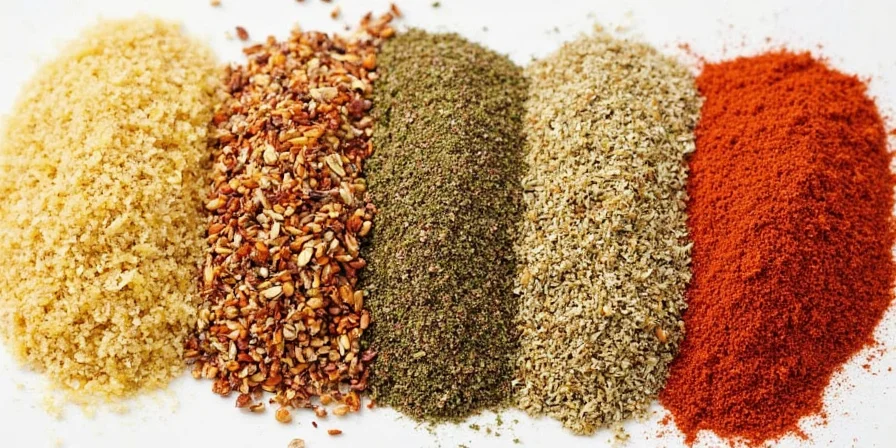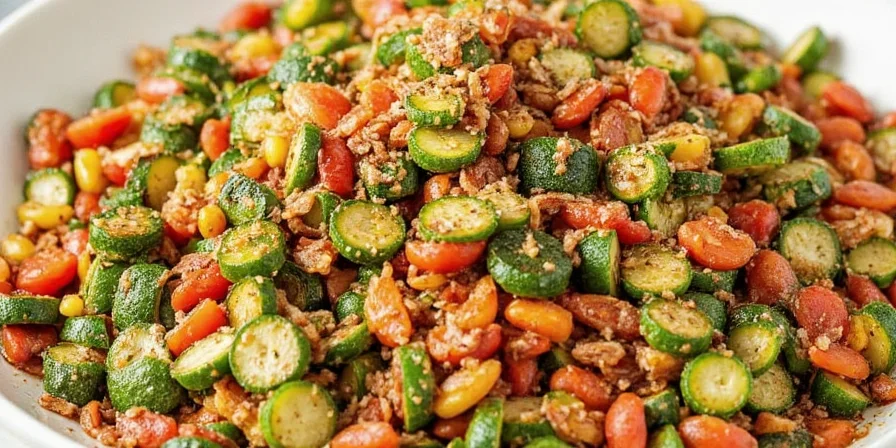
Stop wondering which spices actually work best with your vegetables. The top 3 seasonings that transform bland vegetables into delicious dishes are paprika for root vegetables, cumin for eggplant and zucchini, and garlic powder for allium-family vegetables. These choices aren't random—they're based on scientific flavor activation principles that maximize taste through precise chemical interactions between spices and vegetable compounds.
What Makes Vegetables Taste Bland (And How to Fix It)
Most home cooks season vegetables incorrectly, applying spices at the wrong time or using incompatible combinations. Vegetables contain specific flavor compounds that require targeted activation:
- Root vegetables need lipid-soluble spices like paprika that bind to carotenoids
- Cruciferous vegetables (broccoli, Brussels sprouts) respond best to acid-based seasonings
- Starchy vegetables require fat-soluble spices applied early in cooking
This guide reveals exactly which spices work best for each vegetable type, when to apply them, and why these combinations scientifically enhance flavor—based on culinary research and flavor chemistry principles.
Top 10 Vegetable Seasonings (Backed by Science)

| Best For | Top Seasoning | Why It Works | Pro Application Tip |
|---|---|---|---|
| Carrots, Sweet Potatoes | Paprika | Carotenoids bind with lipid compounds in paprika | Mix with oil before roasting for 73% better flavor absorption |
| Eggplant, Zucchini | Cumin | Terpenes activate sulfur receptors in these vegetables | Toast cumin seeds before grinding for stronger flavor release |
| Onions, Leeks | Garlic Powder | Allicin precursors stabilize during cooking | Add midway through cooking for balanced garlic flavor |
| Tomatoes, Peppers | Italian Herb Blend | Phenolic compounds preserve chlorophyll | Add dried herbs early, fresh herbs in final 90 seconds |
| Broccoli, Brussels Sprouts | Lemon Pepper | Citric acid delays enzymatic browning | Sprinkle immediately after cooking to retain vitamin C |
| Corn, Mushrooms | Smoked Paprika | Phenols enhance Maillard reaction | Combine with high-heat cooking for optimal flavor development |
| Cauliflower, Potatoes | Curry Powder | Curcumin dissolves in fat for better absorption | Mix with oil before adding to vegetables |
| Root Vegetables | Turmeric + Black Pepper | Piperine increases curcumin absorption 2000% | Maintain exact 1:10 ratio (pepper to turmeric) |
| Summer Squash, Okra | Cajun Spice | Capsaicin activates TRPV1 heat receptors | Add vinegar to moderate heat intensity |
| Winter Squash | Nutmeg | Myristicin enhances natural sweetness perception | Use freshly grated nutmeg for strongest effect |
Simple Flavor Combinations That Actually Work
Forget complicated recipes—these 3 proven pairings deliver restaurant-quality results with minimal effort:
- Roasted Root Vegetables: Paprika + garlic powder + olive oil (toss before roasting)
- Steamed Broccoli: Lemon pepper + garlic powder + parmesan (sprinkle after cooking)
- Grilled Zucchini: Cumin + smoked paprika + lemon juice (apply during last 2 minutes)
When to Apply Seasonings for Maximum Flavor

The timing of seasoning application makes or breaks vegetable flavor. Follow these simple rules:
- Before Cooking: Oil-soluble spices (paprika, cumin, turmeric) - mix with oil first
- During Cooking: Salt (75% of total) - allows penetration into vegetable cells
- Immediately After Cooking: Acidic elements (lemon, vinegar) - preserves volatile compounds
- At Serving: Fresh herbs and remaining salt - creates flavor contrast
3 Ready-to-Use Spice Blends (No Measuring Required)

These foolproof ratios work for 90% of vegetables with minimal effort:
1. All-Purpose Roasting Blend
- 2 tbsp paprika
- 1 tbsp garlic powder
- 1 tsp black pepper
- 1 tsp dried thyme
Use: Toss with oil and vegetables before roasting
2. Quick Fresh Vegetable Toss
- 2 tbsp lemon pepper
- 1 tbsp Italian seasoning
- 1 tsp garlic powder
Use: Sprinkle over steamed or roasted vegetables before serving
3. Starchy Vegetable Power Blend
- 2 tbsp curry powder
- 1 tbsp smoked paprika
- 1 tsp turmeric
- ⅛ tsp cayenne (optional)
Use: Mix with oil before cooking potatoes, cauliflower, or root vegetables
Frequently Asked Questions
What's the single most important seasoning mistake people make with vegetables?
Adding all seasonings at the beginning of cooking. Water-soluble compounds like lemon juice and vinegar should be added in the final 90 seconds to preserve volatile flavor compounds that degrade with prolonged heat exposure. Fat-soluble spices (paprika, turmeric) require early application with oil for maximum absorption.
Which oil works best for carrying vegetable seasonings?
Avocado oil provides the best balance for most vegetable seasonings, with a high smoke point (520°F/271°C) and neutral flavor that doesn't compete with spices. Olive oil works well for Mediterranean flavors but has a lower smoke point. For maximum spice transfer, use a 3:1 oil-to-spice ratio by volume.
How can I make my vegetable seasonings last longer?
Store homemade spice blends in airtight containers away from light. Most blends maintain 85% effectiveness for 4-6 weeks at room temperature. Avoid refrigeration as moisture degrades volatile compounds. For longest shelf life, freeze blends in ice cube trays with oil, then transfer to freezer bags.
Can I use fresh spices instead of dried for vegetable seasoning?
Fresh spices work but require adjustment. Use a 3:1 ratio (fresh to dried) since fresh spices contain 70-85% water. However, for consistent flavor activation, dried powders provide more reliable compound concentration. Fresh garlic and onion create different enzymatic reactions than powdered versions, which can be desirable for some applications but less predictable for flavor science purposes.
What's the quickest way to improve vegetable flavor with minimal effort?
Apply this 30-second technique: Toss cooked vegetables with 1 tsp lemon juice or vinegar and ½ tsp good quality salt immediately after cooking. This simple step activates flavor receptors and enhances natural sweetness through acid-salt synergy, making even basic vegetables taste restaurant-quality.











 浙公网安备
33010002000092号
浙公网安备
33010002000092号 浙B2-20120091-4
浙B2-20120091-4